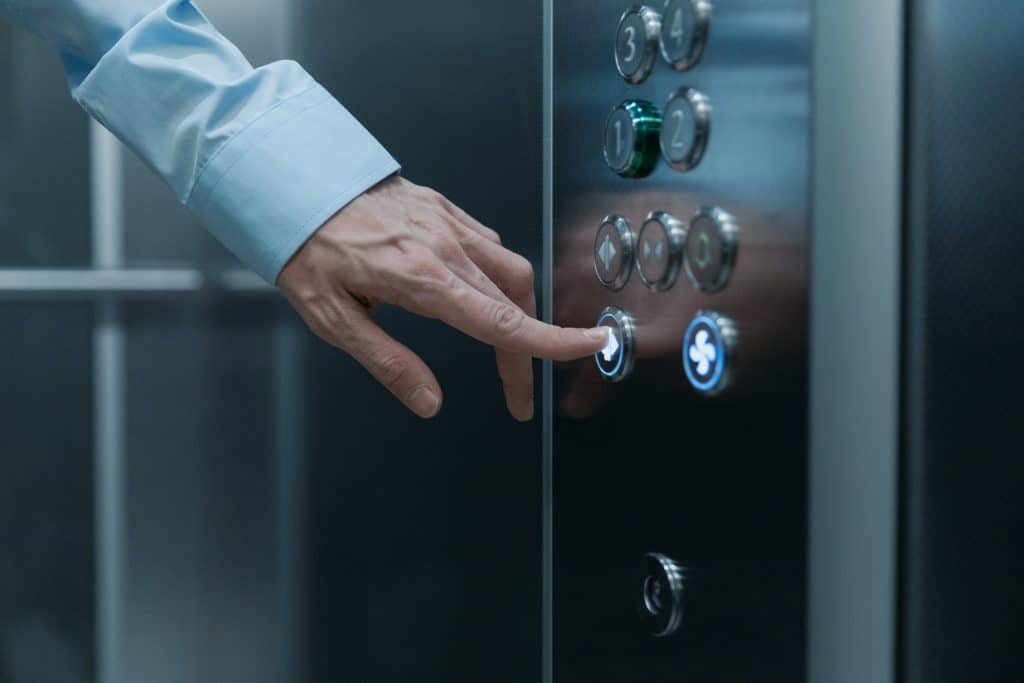Energy efficiency in commercial buildings is an essential component of overall sustainable development. The building sector, including commercial structures, is accountable for approximately 40% of total energy consumption worldwide, as noted by ACEEE. Thus, there is a pressing need to focus on energy-efficient developments and renovations to reduce overall consumption and emissions.
Operating passive systems such as lighting, ventilation, heating, and elevators require a significant amount of energy. Among these, elevators often account for up to 10% of a building’s energy consumption, indicating the importance of energy-efficient designs in commercial elevators.
The Role and Importance of Commercial Elevators in Energy Consumption
Commercial elevators play a crucial role in the day-to-day functioning of high-rise buildings, facilitating the movement of goods and people. Given their widespread use, elevators contribute significantly to a building’s energy consumption. Traditional elevator systems can consume up to 3% to 8% of a building’s total energy, which increases during peak usage times.
However, with innovative systems that leverage energy-saving technologies, the energy consumption of commercial elevators can be significantly lessened. Therefore, the role of energy-efficient elevator designs is critical, not only to reduce operating costs but also to contribute significantly to sustainable development.

Current Challenges in Elevator Energy Efficiency
Energy efficiency in commercial elevators is not without its challenges. One of the major hurdles is the stand-by energy consumed when elevators are not in use. This energy usage can make up to 60% of the total elevator energy consumption. Another challenge is the relatively low occupancy of elevators, with most operating at less than half their capacity, leading to inefficient energy use.
Efficient elevator design also poses technical challenges. The implementation of energy recovery systems, for example, can be complex due to the necessity of integrating with existing building power systems.
Innovative Commercial Elevator Designs for Improved Energy Efficiency
To address these challenges, companies are designing innovative commercial elevators that prioritize energy efficiency. For example, Platinum Elevators offers a range of commercial lifts designed to minimise energy usage.
These innovative designs include regenerative drives that recycle energy, LED lighting, and standby power mode when the elevator is not in use. Further, smart technology allows for better control and monitoring of elevator use, reducing energy consumption.
Case Studies: Success Stories of Energy Efficient Elevator Design Implementation
Several successful implementations of energy-efficient elevator designs reflect their impact and potential. One such case is the retrofitting of elevators in the Empire State Building, where energy consumption was reduced by 30% through the installation of regenerative drives and standby power mode.
Another case is the Leadenhall Building in London, where the use of smart elevators that adjust speed and load based on demand has resulted in an estimated 40% reduction in energy consumption.
Future Outlook: The Possibilities and Potential of Energy Efficient Elevators
Looking forward, the potential of energy-efficient elevators is vast. With advancements in smart technologies and the growing importance of sustainable practices, the demand for energy-efficient elevator designs is likely to surge.
Moreover, legislation and building codes are increasingly encouraging or even mandating the use of energy-efficient technologies in commercial buildings, creating further opportunities for innovation and growth in this sector.
Innovations in energy-efficient commercial elevator designs are thus set to play a pivotal role in the future of sustainable building practices, contributing both to cost savings and to the global goal of reduced energy consumption.



